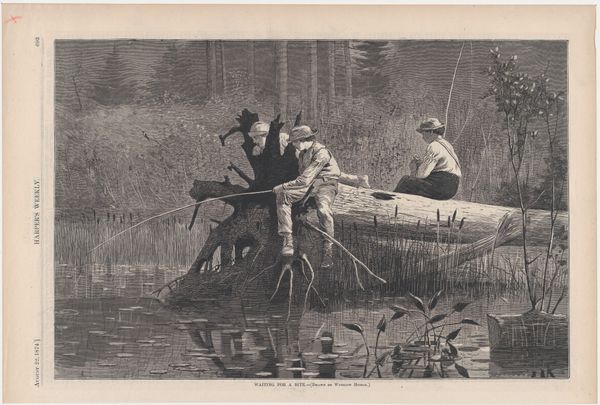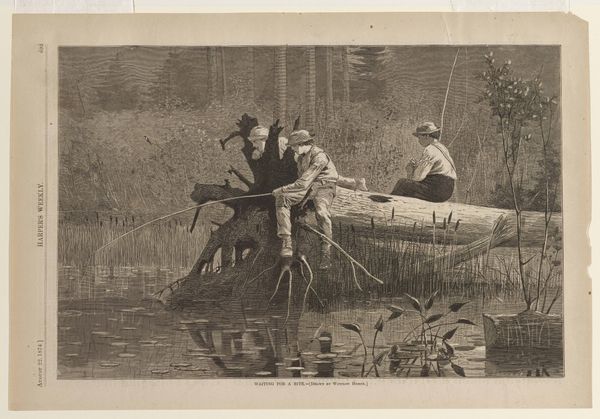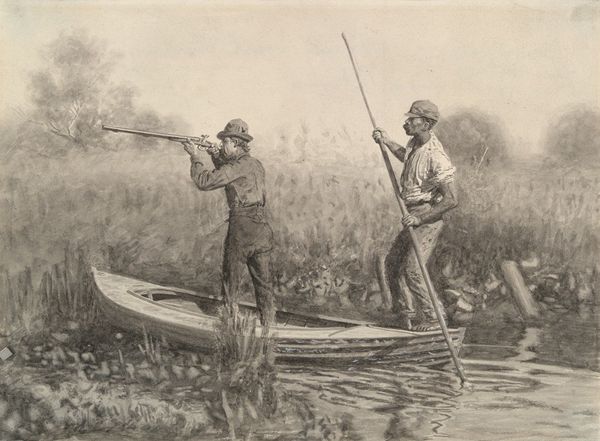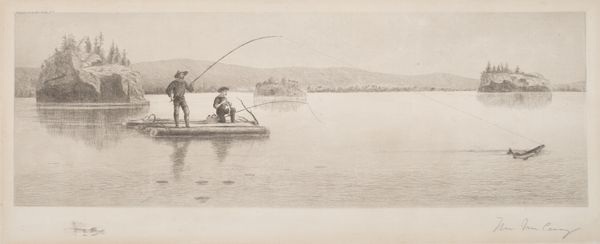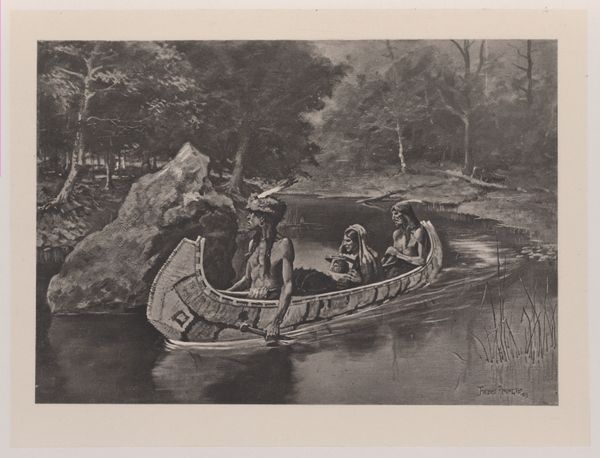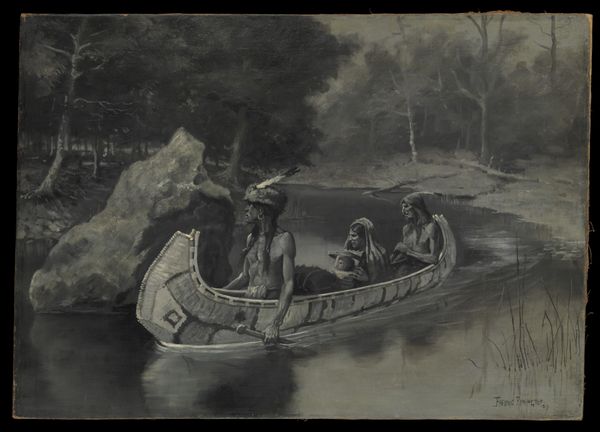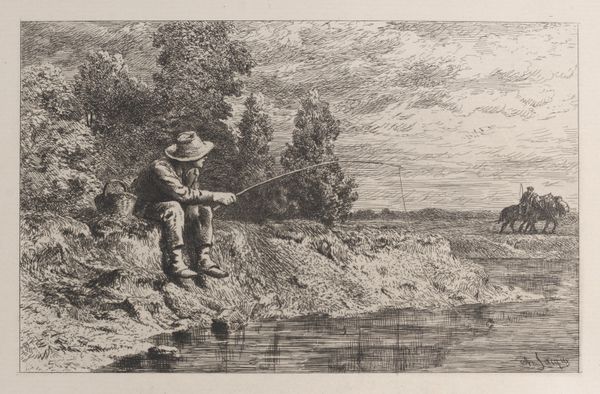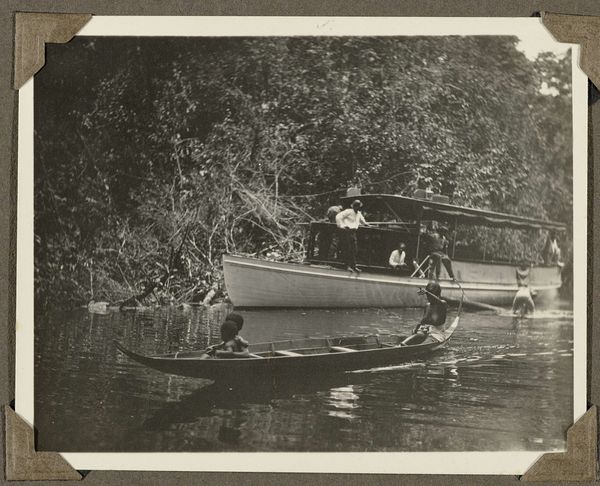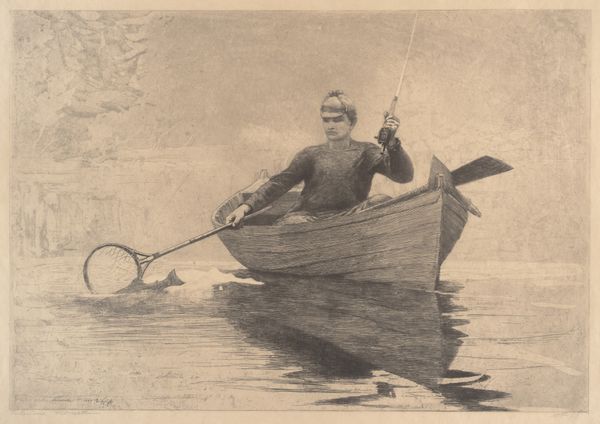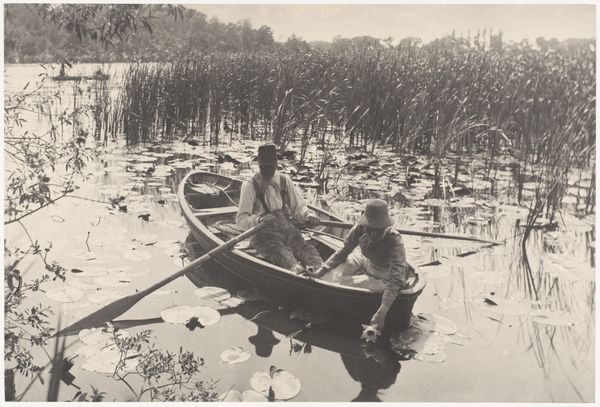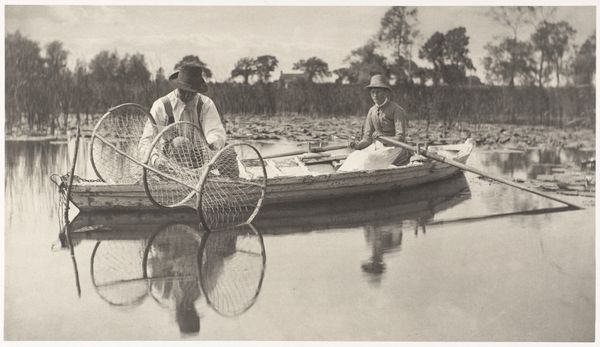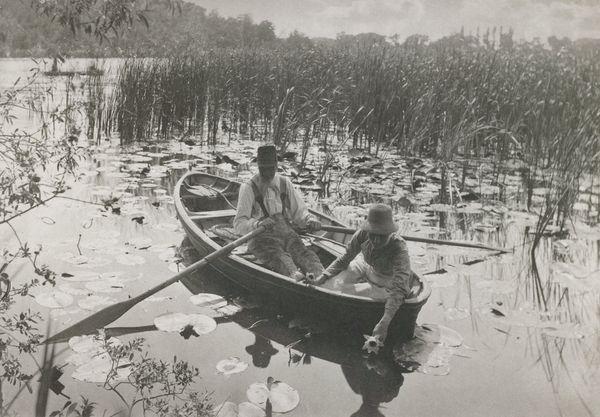
Trapping in the Adirondacks (from "Every Saturday," Vol. I, New Series) 1870
0:00
0:00
drawing, print
#
drawing
#
boat
# print
#
landscape
#
men
#
realism
Dimensions: Image: 8 7/8 x 11 5/8 in. (22.5 x 29.5 cm) Block: 9 1/8 x 12 1/16 in. (23.2 x 30.6 cm) Sheet: 10 9/16 x 14 1/2 in. (26.9 x 36.8 cm)
Copyright: Public Domain
Editor: Winslow Homer’s “Trapping in the Adirondacks,” a print from 1870, really struck me. There's a stark realism to it. What can you tell me about the broader context of this piece? Curator: This work is a window into a specific moment of exploitation—both of the natural world and of certain social classes. Look closely at the figures; what do you observe about their representation in relation to the environment? Editor: Well, the two men in the boat appear rugged. They're clearly working, one paddling and the other holding up the trap and what looks like…an animal they caught? Curator: Precisely. Consider how Homer situates them within the landscape. It's the Adirondacks, a region undergoing significant transformation at this time due to logging, tourism, and changing social attitudes toward wilderness. The print, appearing in "Every Saturday," wasn't just illustrating a scene; it was participating in a broader cultural narrative about man versus nature, about the commercialization of resources, and, implicitly, about who has access to and control over these spaces. Who do you think Homer's intended audience was for this image? Editor: Probably readers of the magazine, so, urban folks, likely middle or upper class… seeing a romanticized version of the wilderness? Curator: Perhaps, but let’s also consider how that romanticization often obscures the labor and ecological impact involved. Trapping, at the time, was both a means of survival and a commercial activity, deeply connected to systems of trade and exploitation that benefited some while dispossessing others. What might this scene tell us about power dynamics, not just in the natural world, but also in society? Editor: So it’s not just a picture of guys trapping animals, it's connected to ideas about how we use nature and who profits from it. I’ll never see landscapes the same way again! Curator: Precisely. And understanding those layers enhances our engagement with the work, prompting us to question the values and perspectives embedded within seemingly simple scenes.
Comments
No comments
Be the first to comment and join the conversation on the ultimate creative platform.

